A number of exciting wines from the Portuguese wine producer Bacalhoa, white, red and sweet, and from the Burgundy négociant Bichot, white wines, chablis, and red pinot noirs at a tasting with the Swedish importer with a representative from each of the two wineries. Peter Modin reports on the best wines in the tasting.
On 17 January 2012, Swedish importer Nigab arranged a very interesting tasting for journalists in Stockholm. We sampled a wide selection of wines from two large producers, Maison Albert Bichot in Bourgogne and Bacalhôa Vinhos de Portugal, which owns vineyards in several Portuguese wine districts. The thirty-two wines, divided into ten flights, were tasted at occasionally breakneck speed, and I will give an overview and focus on some of the most interesting wines.
Round 1: three white Portuguese wines
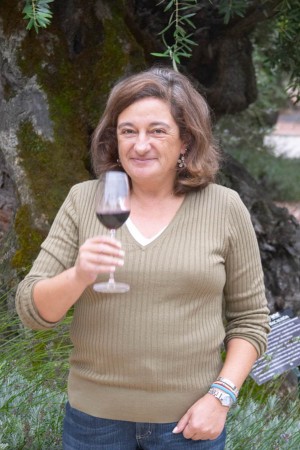
Initially, the friendly group winemaker Vasco Penha Garcia from Bacalhôa (in case you were wondering, the name is pronounced [bahkalyouah]) offered three white Portuguese wines. The first one, 2010 Quinta dos Loridos (SEK 99), a competitively priced alvarinho from the Loridos vineyard near Lisbon, should be commended for its aromatic freshness. Apple aromas with hints of tropical fruit and good acidity made this wine a prime example of the variety’s typical qualities, and while intended to be drunk soon, it should survive a few years of cellaring.
2010 Catarina (SEK 89), a mixture of local grapes and 40 % chardonnay, was decent on the nose but somewhat too bitter and lacking in body for my taste. The odd blend 2010 Quinta da Bacalhôa (SEK 159) consisting of 50 % semillon and 25 % each of sauvignon blanc and alvarinho, was however more pleasant: spicy, a bit aromatic and peppery on the nose with a palate that corresponded well. Barrel fermentation of some of the semillon most likely contributed complexity and a hint of oak.
The result was an appealing and balanced wine that will most likely benefit from a few years of cellaring.
Round 2 – white Burgundy and Chablis
Christian Ciamos of Maison Bichot then took over, and did so with confidence and charm; the Bacalhôa winemaker even spontaneously named him the best guide he had ever tasted with. While this may have been a slight exaggeration, we certainly did have an excellent tasting under Christian’s confident guidance.
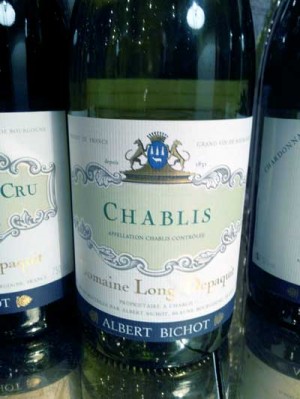
The white Burgundy wines were generally impressive. Maison Albert Bichot is a sixth generation family business, and its winemaking strategy appears well thought-through. One example is that the firm has separate facilities and winemakers for different parts of Burgundy.
The grapes for Bichot’s Bourgogne Vieilles Vignes Chardonnay (SEK 99) come exclusively from 20-25 year-old vines in Côte de Beaune, and the wine is a typical example of a competently made and reasonably priced white Burgundy; clean and elegant on the nose and palate with fresh citrus aroma, good acidity and integrated oak which is present but not intrusive. The wine was aged in 50 % old barrels.
Bichot upholds a principle not to age Chablis in barrels at all. In my opinion this is a laudable ambition that prevents the typical fresh minerality of the wines to be unnecessarily muddled by oak flavour.
The producer’s most affordable Chablis 2009 (SEK 165) is clean on the nose with light minerality and citrus aroma. As expected, the acidity is nice and crisp. I got the impression that the wine might be lacking slightly in body, which might be due to the vintage (2009 was not a great year) or to the inevitable comparison with the more exclusive wines that followed…
A wine without serious flaws, in any case.
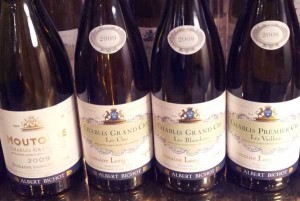
Four Chablis wines in a higher price range were also sampled, of which most weren’t available to Swedish consumers through the national liquor monopoly (Systembolaget). Fortunately, however, the wine that appealed the most to me, 2008 Chablis Grand Cru Les Blanchots Dom. Long-Depaquit (SEK 329) was currently available. 2008 was a sunny year that yielded ripe, powerful wines and Bichot’s Les Blanchots was no exception. Despite complete malolactic fermentation (which Bichot subjects all white Burgundy wines to), however, the acidity is nevertheless extreme. Characteristic citrus and mineral on the nose is complemented by light buttery aromas from barrel fermentation and ripe spiciness.
Les Blanchots should be cellared for several years and is recommended by Christian Ciamos to be drunk with dishes that have light meats as their main ingredient.
We also sampled three more white Burgundy wines from Bichot which were also of high quality; my personal favourite was the 2010 Meursault Domaine du Pavillon (SEK 269) which featured spices, mineral and elegant oak on the nose and excellent acidity and just the right amount of power from barrel aging (30 % was aged on new oak).
Christian Ciamos deemed this wine not ripe enough to be drunk yet. While I agree that it will surely benefit from five years cellaring or so, I found it quite drinkable already.
Round 3: five red Portuguese wines
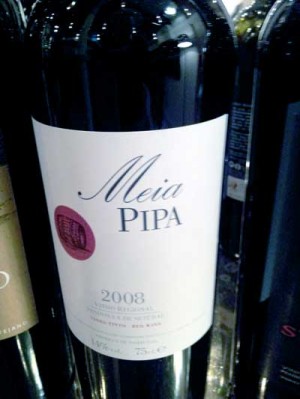
After this, it was Vasco’s turn again. He had nine Portuguese red wines on offer. Among the more affordable, I found the 2008 Meia Pipa (SEK 79) much more appealing than 2009 Tinto da Anfora (also SEK 79). Both wines are blends. Tinto da Anfora came across as having less complex berry aromas compared to the darker fruit and, lacking a more accurately descriptive term, exciting aromas of Meia Pipa. With appealing hints of vanilla on the palate, the healthy acidity of Meia Pipa makes it a suitable match for a wide range of foods while Tinto da Anfora comes across as flatter and too bitter for my taste.
Meia Pipa has been available through the Swedish alcohol monopoly since 2004 and consists of equal parts castelão, cabernet sauvignon and syrah.
Four mid-priced red wines from Bacalhôa that can be ordered through Systembolaget were also tasted. The single varietal wines 2008 Só Syrah and 2007 Só Touriga Nacional – só means “only” or “alone” in Portuguese – both cost SEK 139 and both exhibited characteristics typical of the varietals and were well-made. The syrah grew on sandy soils in a hot climate and was extensively green harvested to ensure low yield. Typical, flowery aromatic notes on the nose and a palate with good tannin structure and fruit made me think of more expensive Rhône wine. The touriga nacional was lighter, with fresher fruit on the nose; also thinner on the palate but with a firm tannin structure.
Aside from these single varietals, the trend at Bacalhôa is to grow less international grapes and increase usage of traditional Portuguese varietals, which seems like a sensible strategy.
The Alentejo wine 2007 Quinta do Carmo (SEK 159), consisting mainly of must from domestic varietals, had appealing notes of berries, spices and oak as well as an original and pleasant aroma on the palate, while 2009 Quinta da Bacalhôa (SEK 189), made from 90 % cabernet sauvignon and the rest merlot, was simply a nice and fruity standard cab: decent but not exceptional.
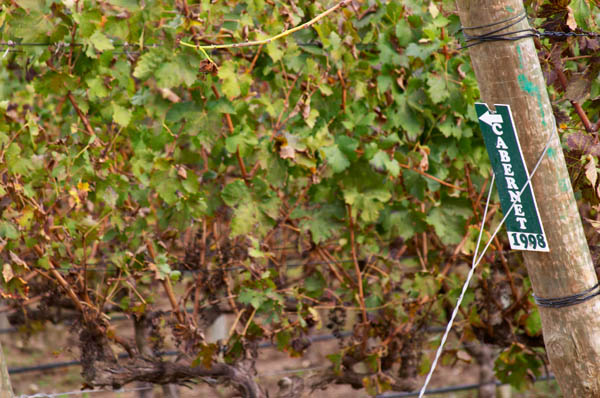
Round 4: Back to Burgundy: reds from Bourgogne
Next we turned to red Burgundy wines. Bichot’s entry level offering in this category, the 2009 Bourgogne Vieilles Vignes Pinot Noir (SEK 99), was a schoolbook example, much like the corresponding white (already mentioned above). It will be launched at Systembolaget on 1 April. The wine is fresh on the nose with scents typical of pinot noir, with strawberry jam and associated aromas. On the palate, the wine is similarly fresh, juicy and drinkable. The producer recommends serving it at 14-15 degrees Celsius with red meat or salmon, or a little warmer with richer dishes like coq au vin.
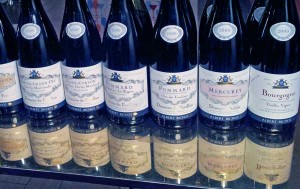
If an even softer, more velvety Burgundy is desired, the raspberry scented 2009 Mercurey Domaine Adelie (SEK 149) could be recommended. It has too silky (i.e. nearly absent) tannins for my taste, but if that does not bother you, you might instead be attracted by what Christian Ciamos described as “limestone finesse” in this wine.
Two Pommard wines were also sampled, both from Domaine du Pavillon, the 2009 Premier cru Les Rugiens (SEK 469) and 2009 Clos des Ursulines (SEK 259). The former is spicy and complex with lots of freshness and red fruit on the nose. For a Burgundy, the tannins are sturdy, and a nice complexity and well balanced acidity all contribute to making this a very good wine. However, the difference in quality between this wine and the nearly half as expensive Clos des Ursulines is not large enough to warrant the difference in price. The latter wine was also spicy and complex on the nose and had good acidity and tannins; an elegant wine, in conclusion.
We also tasted two wines from Clos des Maréchaudes. Christian told us that the vineyard workers claim to be able to tell easily when they cross the boundary between the two appellations that comprise the vineyard (Corton and Aloxe-Corton) from the way the noise from the equipment changes when the soil changes character.
The wines we tasted, 2009 Aloxe-Corton 1er Cru (SEK 269) and 2009 Corton Grand Cru (SEK 556), both Domaine du Pavillon, differ only in two respects: the proportion of new oak used (100 % for Grand Cru, 50 % for 1er Cru) and the soil. The Aloxe-Corton had subtle aromas of red fruit on the nose and nice tannins, but the concentration and complexity was considerably higher in the other wine, unsurprisingly given the difference in price. In the Grand Cru wine, too, the aroma was dominated by red fruit, including a unique and appealing scent of wild strawberry (the real berry aroma, that is, not the artificial one). This wine had a solid tannin structure and a long, complex flavour of ripe fruit. Neither of these wines is available to private consumers in Sweden except by so called “private import”.
Final round: Moscatel de Setubal
Vasco from Bacalhôa finally offered us some classic Portuguese dessert wine to taste: Moscatel de Setúbal. Bacalhôa only makes vintage Moscatel which is cellared in the traditional fashion: hot in the summer and cold in the winter. This causes a considerable share of the wine to evaporate from the barrels – the angels’ share is upwards of 5 % annually – resulting in increased intensity.
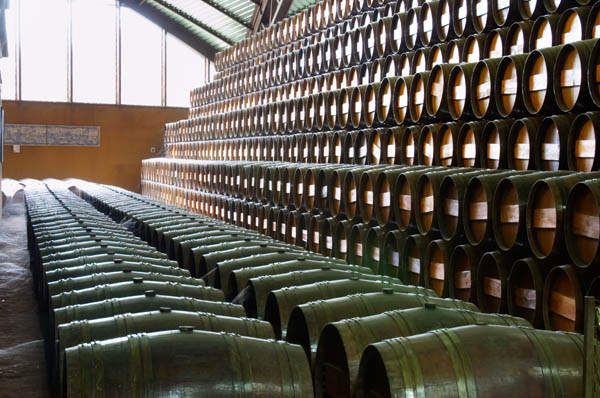
The Bacalhôa standard wine of this type, 2004 Moscatel de Setúbal (SEK 99) has a rich aroma of dried fruit, raisins and nuts. On the palate, the wine is sweet, but not painfully so. Rather, the wine has sufficient acidity to balance the sweetness. Vintage 2000 of the same wine had even more intense aroma and flavour and also featured slightly burnt notes – absolutely wonderful and well worth the twice as high price tag, SEK 199.
In conclusion, Bichot and Bacalhôa are both prime producers in their respective districts, and both offer an extensive and varied range of wines that are well worth exploring.
The importer: https://www.nigab.se/
Peter Modin writes on wine and wine tastings in Sweden for BKWine Magazine.
[box type=”info”]BKWine regularly organizes wine tours to both Burgundy and Portugal. In Portugal for example to the Douro and Alentejo. In Burgundy we both cover wine tasting destination in the heart of Burgundy, Côte d’Or, as well as Greater Bourgogne with Chablis, Beaujolais etc. Take a look at our wine travel program on BKWine Tours.[/box]
[photoshelter-gallery g_id=’G0000ocq30.CTahI’ g_name=’Portugal-Terras-do-Sado-Bacalhoa-Vinhos-stock-photo-samples’ f_show_caption=’t’ f_show_slidenum=’t’ img_title=’casc’ pho_credit=’iptc’ f_link=’t’ f_enable_embed_btn=’t’ f_send_to_friend_btn=’t’ f_fullscreen=’t’ f_smooth=’t’ f_up=’t’ f_bbar=’t’ f_htmllinks=’t’ fsvis=’f’ width=’600′ height=’450′ f_constrain=’t’ bgcolor=’#AAAAAA’ bgtrans=’t’ btype=’new’ bcolor=’#CCCCCC’ crop=’t’ trans=’xfade’ tbs=’4000′ f_ap=’t’ linkdest=’c’ twoup=’f’ f_topbar=’f’ f_bbarbig=” f_show_watermark=’f’ f_mtrx=’f’ target=’_self’ wmds=’llQ6QNgpeC.p1Ucz7U.Y4RzAnQYvmKbcV4WH0U7iIxCArST0Top2h3W2gOQ9QVZ6v03h5Q–‘ ]
Portugal Terras do Sado Bacalhoa Vinhos stock photo samples – Images by Per Karlsson


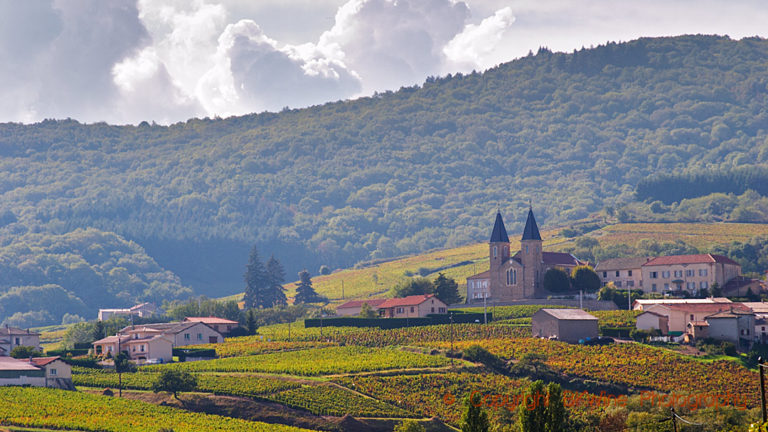
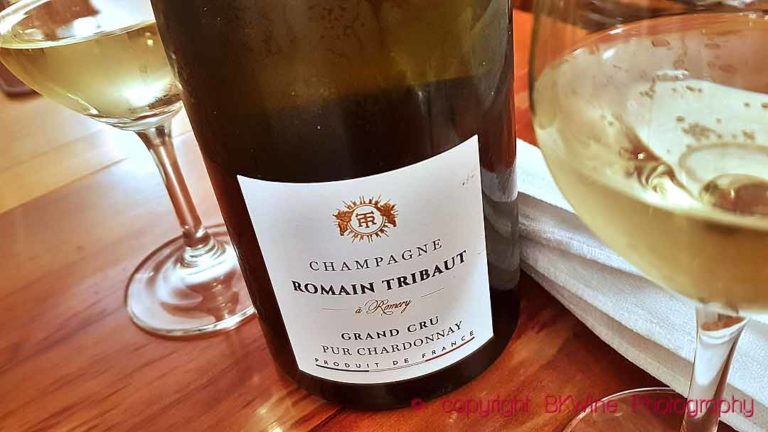
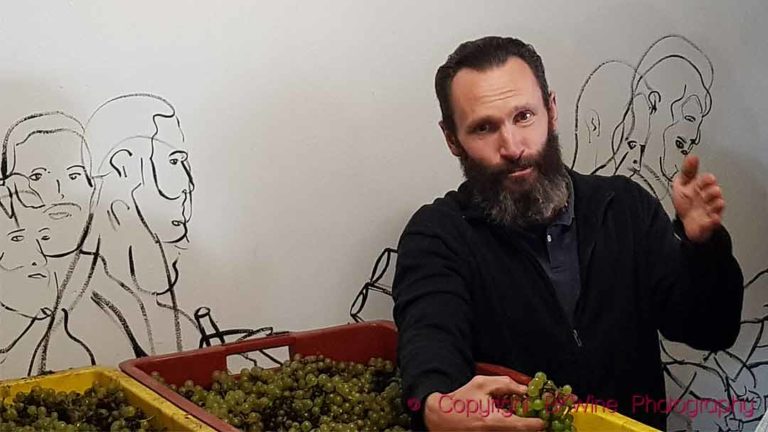




One Response